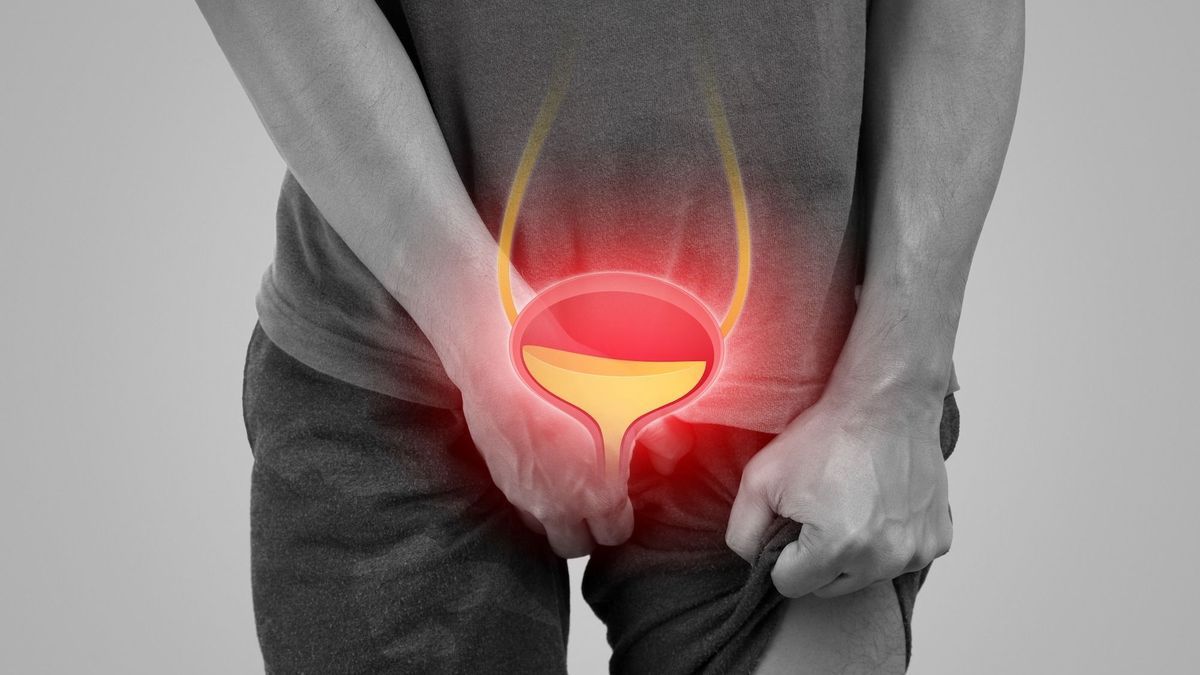
Polyuria is characterized by the emission of abnormally abundant urine, namely greater than 3 liters per day. It is often confused with pollakiuria, which reflects a high frequency of urination. When should you be concerned about these symptoms? What pathologies can be at the origin? The answers of Dr Ala Chebbi, urological surgeon at the Mantaise region clinic.
Normal urination: How many times should you urinate per day on average?
If the volume and normal frequency of urination are quite variable depending on the individual, it is considered that a healthy person must have a diuresis (urine secretion) of between 0.8 and 1.5 liters per day, and a frequency of urination less than or equal to 7 per day.
Definition: When do we talk about polyuria or pollakiuria?
Polyuria defines an abnormally high urinary volume, namely greater than 3 liters per 24 hours. Pollakiuria, for its part, is characterized by too high a frequency of daytime and nighttime urine, namely greater than 7 per day, but with a normal total urinary volume (around 350 ml per urination). “Polyuria is generally accompanied by an increase in urinary frequency, but we speak of pollakiuria only when the total urinary volume is not increased” indicates the urologist. To evaluate these two symptoms and clearly differentiate, the patient is asked to keep a urination calendar, in which he notes for 3 full days: the urination schedule, the volume of each urine at the using a measuring cup and it specifies whether there has been urinary leakage.
Causes: What disease causes you to urinate a lot?
Polyrue and pollakiuria can be symptoms of different pathologies or disorders.
Diabetes: What is polyuro-polydipsic syndrome?
The most common disease causing polyuria is diabetes mellitus. “Patients whose diabetes is not controlled have high blood glucose levels, and therefore high urine glucose levels, which exceed tubular reabsorption capacity. This causes a high amount of glucose in the kidney tubules, which attracts water passively by osmolarity, leading to an increase in the volume urinated” summarizes Dr Chebbi. And who says increased urinary volume, says need to rehydrate by increasing their fluid intake: the diabetic patient is therefore very often thirsty. We speak of polyuro-polydypsic syndrome. In the case of diabetes, polyuria is primary (abundant urine), and responsible for polydipsia (significant feeling of thirst). In the presence of this syndrome, capillary blood glucose and/or a measurement of fasting blood sugar (blood sugar level) are generally prescribed to whether or not to move towards the diagnosis of diabetes.
Diabetes insipidus
Much rarer than diabetes mellitus, diabetes insipidus is often linked to a deficiency or ineffectiveness of antidiuretic hormone (ADH), also called vasopressin. This hormone allows the reabsorption of fluids by the kidneys and therefore plays a crucial role in regulating the amount of water eliminated by the kidneys. Diabetes insipidus is therefore manifested by polyuria, including nocturnal, and polydipsia.
Kidney problems
Primary polyuria can also be the consequence of poor water reabsorption in the renal tube, linked to an anomaly of the latter. This may include, for example, interstitial nephritis (primary damage to the renal tubules and interstitium) or kidney damage resulting from sickle cell anemia.
To potomania
Also known as psychogenic polydipsia, potomania is a relatively rare psychiatric condition, manifested by the compulsive need to drink large quantities of water. A pot drinker can drink more than 10 liters per day! A person is considered to have psychogenic polydipsia when they drink more than 3 liters of water per day. In the context of potomania, polydipsia is primary, and is the cause of a large urinary volume: polyuria is then secondary.
Diuretic medications or drinks
Increased urine volume can also be a side effect of certain medications with diuretic effects. “This concerns in particular anti-hypertensives such as thiazides, or loop diuretics, such as furosemide or bumetanide.” indicates the specialist. Diuretic drinks, such as coffee, tea or herbal teas, consumed in large quantities, can also cause polyuria.
Urinary infection
Urinary infection (acute cystitis) is the most common cause of urinary frequency. Cystitis is a bacterial infection of the urethra and bladder, leading to inflammation and infection. “Cystitis is manifested by a frequent need to urinate (pollakiuria) to which is generally added pain and a burning sensation when urinating..
Men: Benign prostatic hypertrophy
Benign prostatic hypertrophy is a benign and very common pathology in elderly men, which affects almost half of men over 50, and almost 90% of those over 80. It is characterized by a noncancerous growth of the prostate, which can then put pressure on the urethra, leading to various urinary symptoms, such as difficulty starting or maintaining urine flow, increased frequency of urination, feeling incomplete emptying of the bladder, and a frequent urge to urinate, especially at night.
What about nocturnal polyuria?
Nocturnal polyuria is characterized by an excessive urge to urinate during the night with the emission of large volumes of urine. Usually, 1/3 of our urine is produced at night and 2/3 during the day: we speak of nocturnal polyuria when these proportions are reversed. This mainly concerns elderly people.
Nocturnal urinary frequency, for its part, corresponds to an unusual frequency of urine during the night. We speak of nocturnal urinary frequency when a person gets up at least once a night to urinate, and they are embarrassed by it. “Some patients get up once or twice a night to go to the toilet, and are not bothered at all: then this is not a problem. It becomes problematic if the awakenings are poorly experienced and lead to sleep problems with fatigue during the day.” indicates Dr Chebbi. Nocturnal urinary frequency can be caused by consuming too much liquid in the evening, such as diuretic herbal teas for example.
